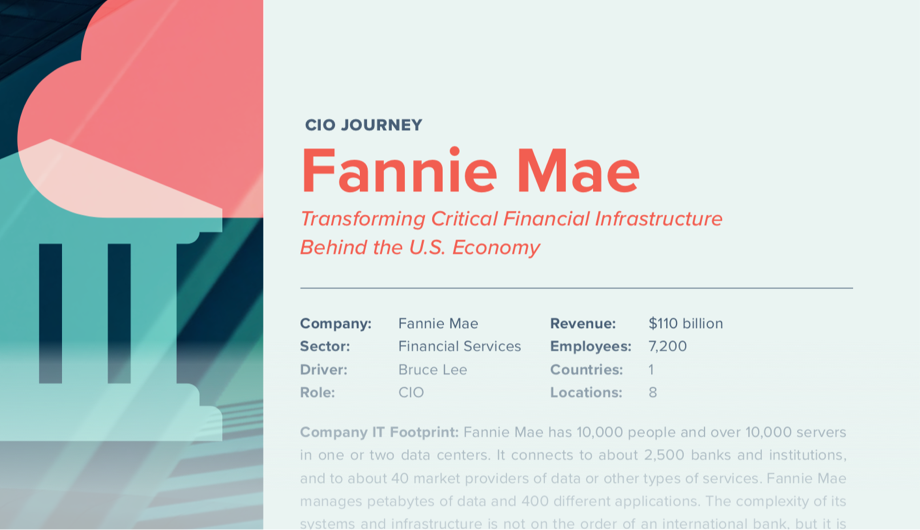Former CIO, Fannie Mae

TRANSFORMATION JOURNEY
Fannie Mae’s financial systems underpin the American banking system, making its cybersecurity and smooth operation essential to its employees and to financial services organizations around the world. Former CIO Bruce Lee shepherded Fannie Mae’s digital transformation to increase the organization’s resiliency, improve agility, reduce complexity, and deploy Office 365.
The company’s secure cloud transformation journey started with getting the legal team’s buy-in to move to the cloud. Lee and team moved to create a collaborative DevOps ecosystem to support the transformation of Fannie Mae’s network and security infrastructure. Fannie Mae is enjoying the outcome of its initiatives: reduced complexity, better user experience, Office 365 adoption, improved control, and better security.



